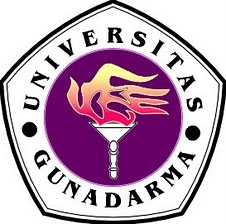Microsoft straps a tablet operating
system to Windows 8. Should enthusiasts make the big upgrade?
Windows 8 is not a want, it’s a necessity.
Not for you, the consumer. For Microsoft.
We’d like to
think that somewhere, somehow, a group of user interface experts like to meet
up for lunch in one of Microsoft’s (likely) sprawling Redmond cafeterias. They
talk about their days, their families, and how horrified they are at
Microsoft’s decision—and need—to unify a single user experience across its
entire product line.
That’s the
real reason why Windows 8 looks and feels like a tablet operating system
slapped overtop Windows 7 (with a few tweaks here and there). It is. Users are
given no way around it—Microsoft has made sure of that fact. And, in many ways,
there’s no way around it for Microsoft, either. The company has decided that
users cannot have dissimilar Windows experiences across desktops, tablets,
smartphones, or any other kooky gadgets on the horizon, but refuses (or can’t)
cut the cord of the traditional desktop experience just yet.
Windows 8 is
the natural, necessary hybrid—the last time you’re likely to see the “core”
Windows experience of the last decade mashed together with the multicolored,
touch-sensitive, “Metro” boxes of the future. A word on that: While Microsoft
has elected to not call the tablet-ized portion of Windows 8’s user interface
Metro—it’s now
just called “Windows 8,” we think—we’ll keep using the old
nomenclature just to make this review easier to process.
However, we’re
willing to bet you’ll have many other colorful names for your experience with
the new OS.
The Installation
We never
thought we’d type the words, “Microsoft has made it easy to install Windows,”
but there you have it. Your first introduction into Microsoft’s latest
iteration of Windows comes from the previously laborious process of blanking
your hard drive and playing the company’s equivalent of 20 questions to install
an OS.
Assuming you
have a product key—now a requirement to install Windows 8, instead of an
after-the-fact input—the installation process looks identical to Windows 7’s at
first. Once you’ve set the installer to copy files to your hard drive, Windows
8 is off to the races. A simple, black installation screen gives you pithy
updates about what’s happening between your installation media and your hard
drive. After that, only five prompts require your attention, including one for
picking your PC name and your favorite color and three that relate to verifying
the settings for the Windows Live ID you’ll want to link to your installation.
When Windows
8 says, “Your PC will be ready in just a moment,” it’s not kidding. This is the
speediest, most annoyance-free OS installation we’ve ever experienced.
Welcome to Metro! Right-click tiles to select them, and then drag them around your Metro desktop to create new columns—it’s a “dumping grounds,” of sorts, for groups of programs.
Up pops
Metro, the tiled-box screen that’s easily Windows 8’s most controversial
feature. To discuss the strengths, weaknesses, and intricacies of Metro alone
could eat up an entire multipage review. So we’ll lead with the biggie: At its
core, Metro feels… undone. To put it another way, Microsoft’s treatment of its
tiles, Metro’s interactions with the “normal” half of Windows 8, and the lack
of customization present in this Hyde to Windows 7’s Jekyll does a disservice
to those who want anything beyond an operating system set in “easy mode.”
www.maximumpc.com
www.maximumpc.com







I have heard not the best reviews about Windows 8 operating system. Though it is very impressive at the appearance, the user interface is also fantastic. But the overall user experience is somewhat making it a failure.
BalasHapusRegards,
Silvester Norman
Change MAC Address